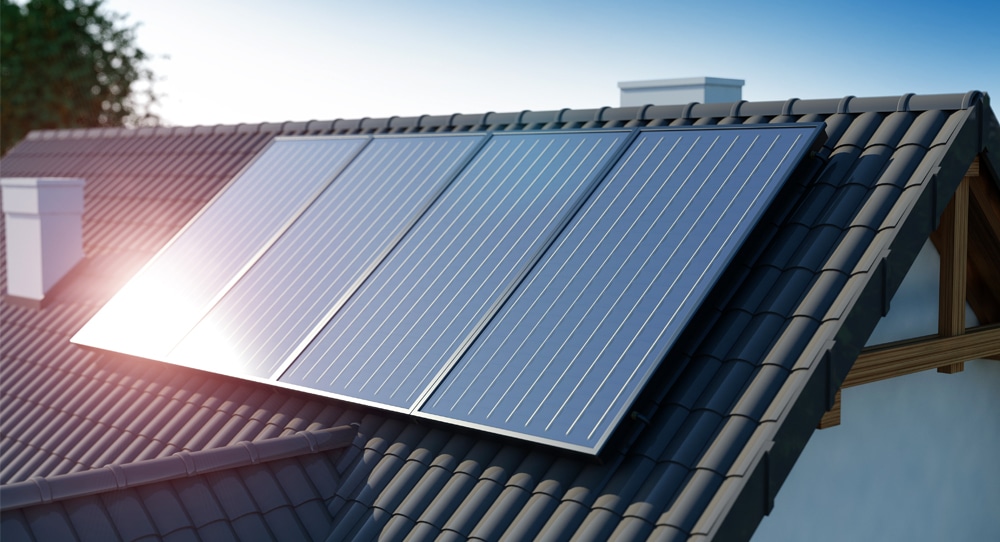Energy efficient solar geyser
Whether you are new to the country, or you’ve lived here all your life, you’ll know that South Africa perfect place for an energy efficient geyser. It’s popular for the safari atmosphere and the unforgiving sun at the peak of summer. In fact, it’s one of the countries that yield the perfect conditions for utilizing solar power. Unfortunately it has also become a necessity, because let’s face it, Eskom rates are continue to climb until electricity is considered a high maintenance luxury. If you could prevent the scenario where you become a victim of corrupt price increases, wouldn’t you consider it?
Take a look at solar geysers for example. They represent the starting blocks for transforming your home into a more independent settlement, and at the same time bring you up to date with the global need for renewable energy. But some people still don’t realize how well solar geysers work in South Africa, because it sounds too good to be true. Can you really cut your electric bill with 50% just by installing the right solar geyser? Do they heat water at the same temperatures conventional geysers do? Are they effective during winter? Is it really worth the investment?
If you are one of the people who still wonder whether they should be installing a solar geyser, you might find your answer below.
How well do Solar Geysers Work in South Africa?
As mentioned in the introduction, South Africa is a natural home for sunshine. You can live just about anywhere in the country and still receive a healthy dose of sunlight. It has been a growing market in S.A, which means you’ll have a rather wide range of options regarding the model as well. Unless you have buildings and trees getting in the way, you should find that solar geysers are very effective on this side of the world.
What about Winter Time?
Always take into account that radiation from sunlight is the most important part of solar energy, not the heat as we experience it. So, while you might be freezing on a winter’s day while the sun is high in the sky, your geyser is still heating up as it should. However, it’s advised to take precautions for temperatures below freezing point. Even though solar geysers typically come with preventative methods for freezing conditions, such as antifreeze liquid, you want to ensure it doesn’t become a problem at all. This can be done with simple precautions such as covering the pipes and using a geyser blanket.
Can Solar Geysers Really Cut Your Bill with 50%?
If the geyser is installed in the optimum position and it gets enough sun, you can cut that bill by almost 60%. This is because conventional geysers usually have two elements running at the same time, and just heating water takes up at least half of the energy you use. Unless you switch to more effective elements for the geyser, you’ll find your geyser is your worst nightmare in terms of electricity usage.
To what Temperature can Solar Geysers Heat Water?
There should be no confusion that solar geysers will heat up the water to 60 degrees celsius, the typical temperature of a conventional geyser.
Will I have Warm Water at Night?
The tank of a solar geyser is insulated to keep water hot for as long as possible. In other words, the water it heats during the day will stay warm during the night.
Is there Maintenance Involved?
Nope, there’s not much maintenance involved, given that there are no moving parts. Just checking the pipes for leaks and the temperature will do for long periods of time.
How Long will it be in Working Condition?
The average lifespan of a solar geyser is 20 years or more. By comparing the price of installing one and what you’ll be paying for electricity in 10 years, you’ll realize what an investment it’s going to be.
What about Hailstorms Hitting the Solar Panel?
Unless the hail is exceptionally large, you shouldn’t be worried about damage to the panels. They are usually covered with glass that’s strong enough to handle typical weather elements.
How much do Solar Geysers Cost?
This will depend on the model and size you choose. For example, a 100L direct solar geyser can range between R6 000 and R7 000. The bigger models, such as the 300L, can cost about R13 000. You’ll probably earn this money back within the first year if Eskom sticks to its current plan.
How Long do Installations take?
Once again, this is going to depend on several factors, such as finding the best position for the geyser and tying it into the water supply. However, a typical installation can take between 2 and 5 hours.
Will I get a Rebate from Government?
Unfortunately this is something you need to discuss with your local municipality, because there used to be a small rebate involved. Now it seems the rebates have been taken away, but we suggest getting more clarity depending on the area you are in.
Do I need a Backup Geyser that is Tied to the Grid?
It’s not going to hurt to have a backup geyser, because there are certain times of the year when clouds dominate the sky. The good news is that you only have to switch on the backup in cases where you’re not getting enough sunshine, which won’t be a lot.

please give me the price for this one
Please find the prices for our solar geysers here